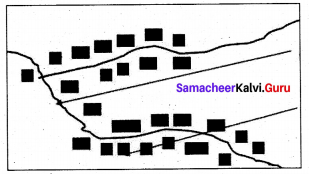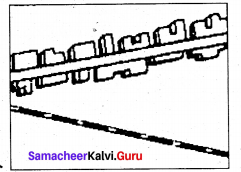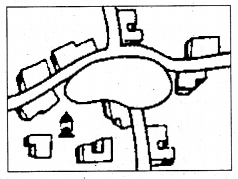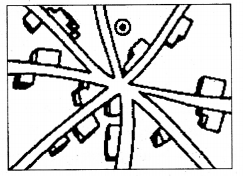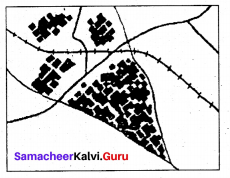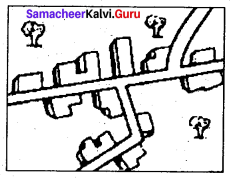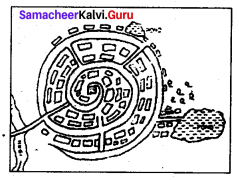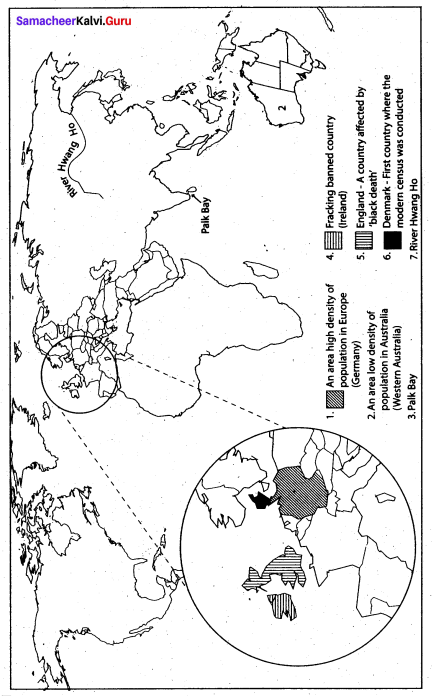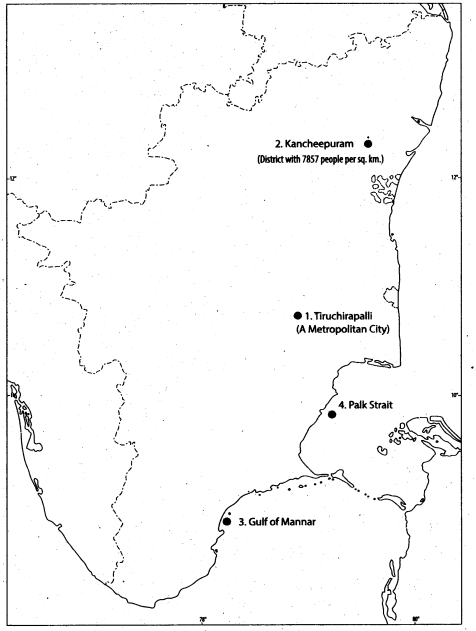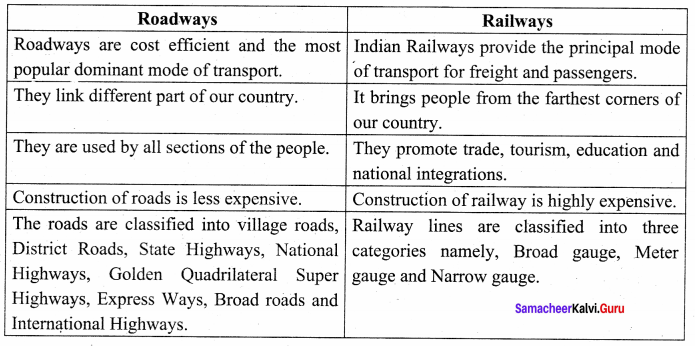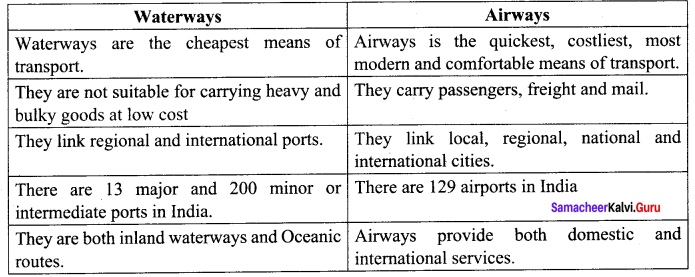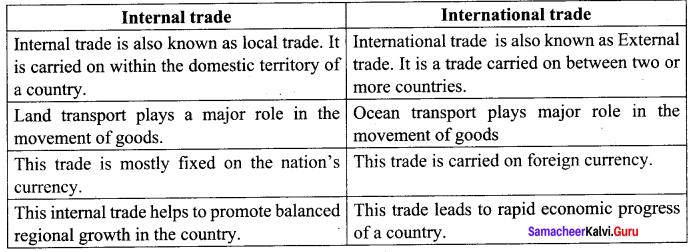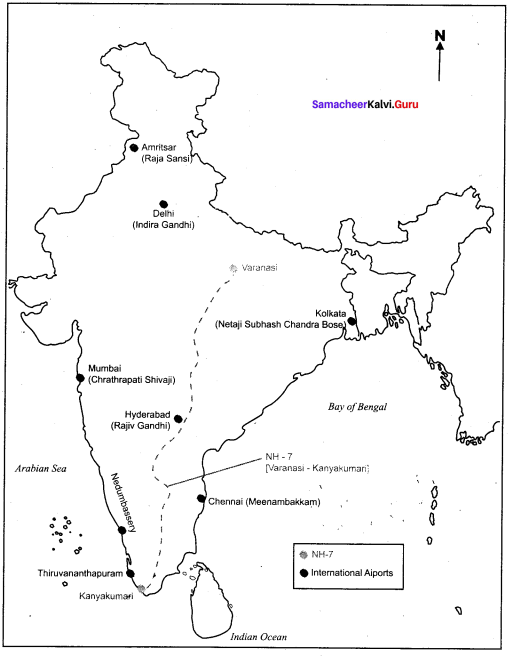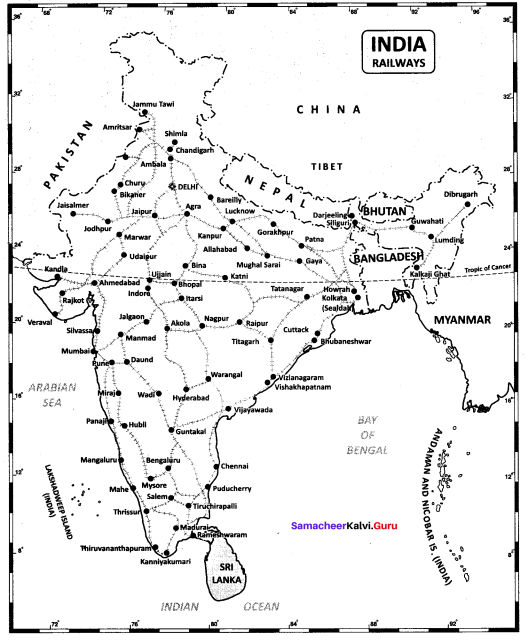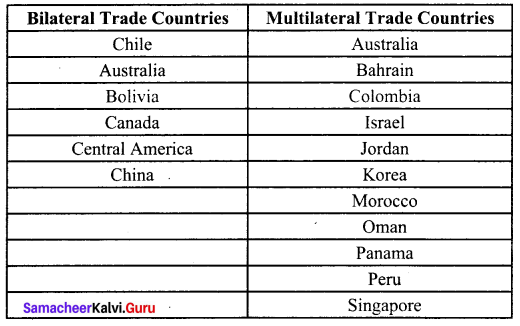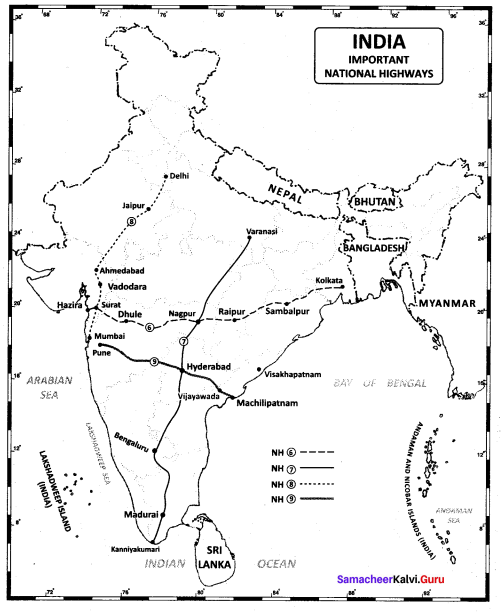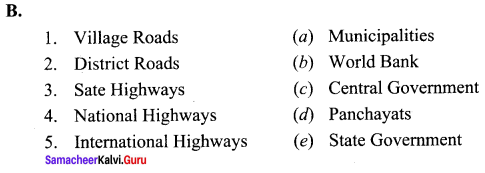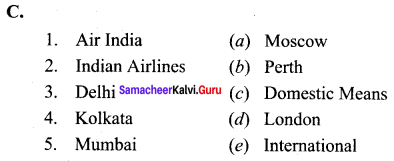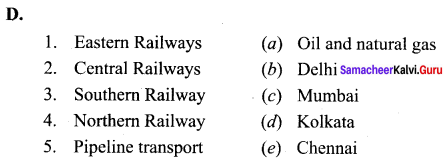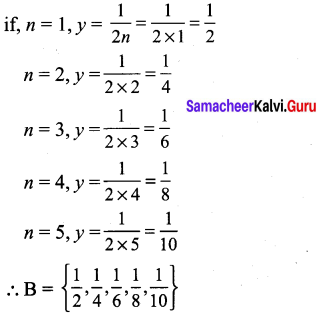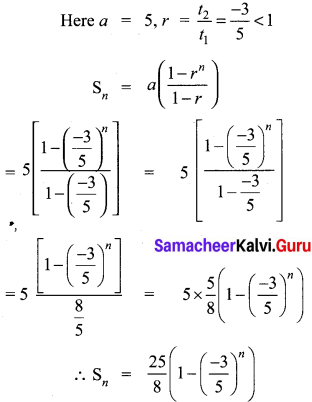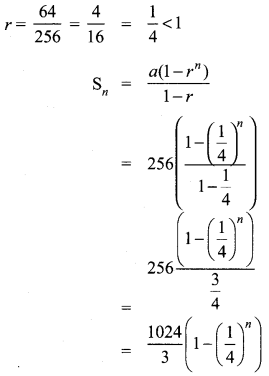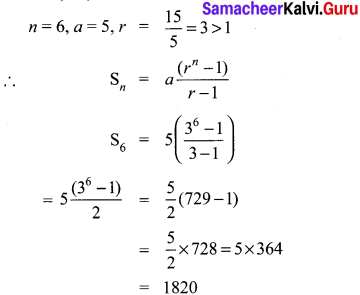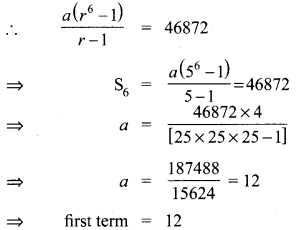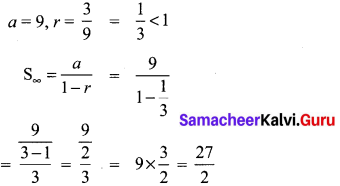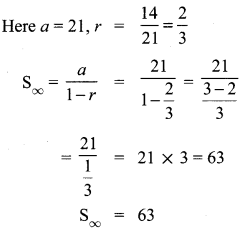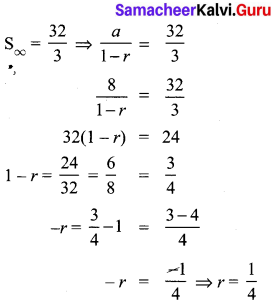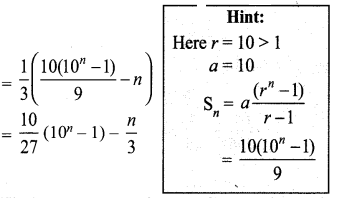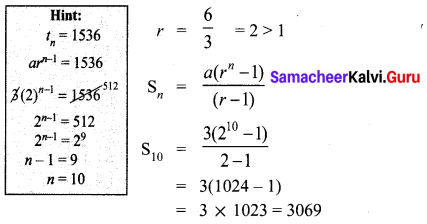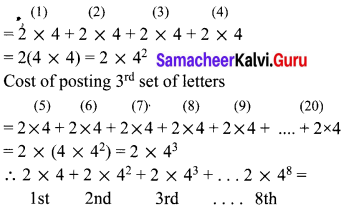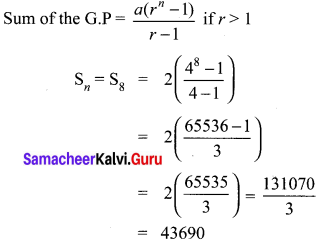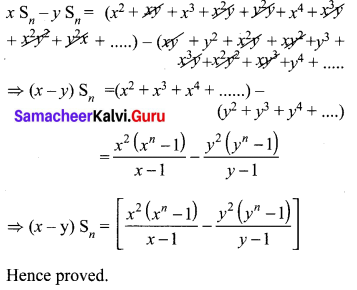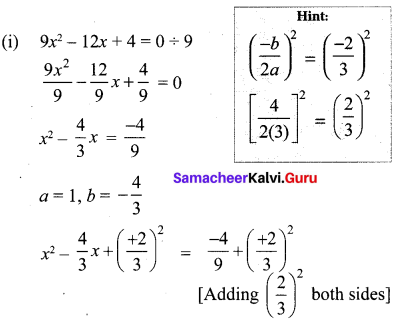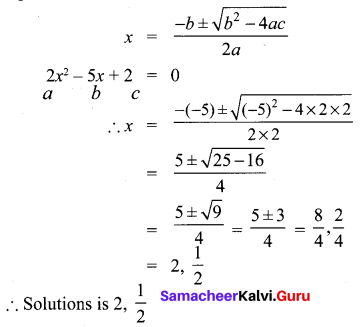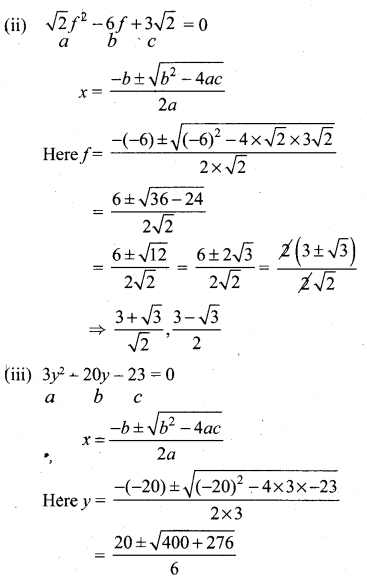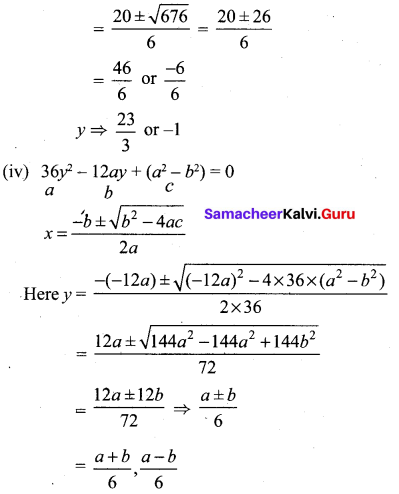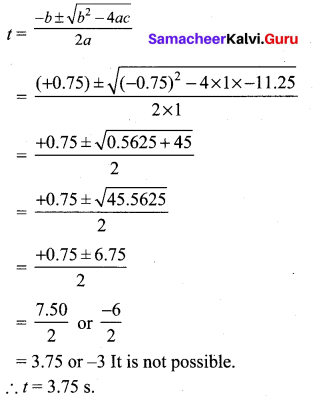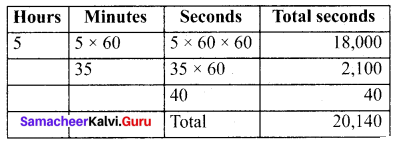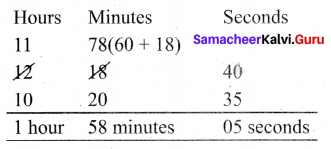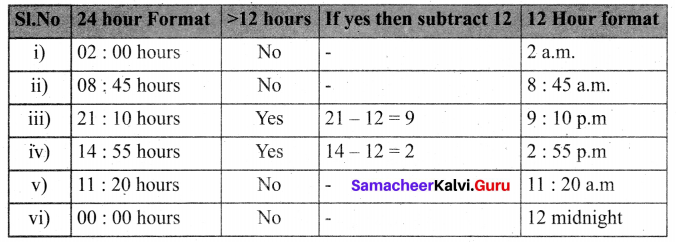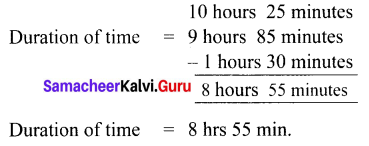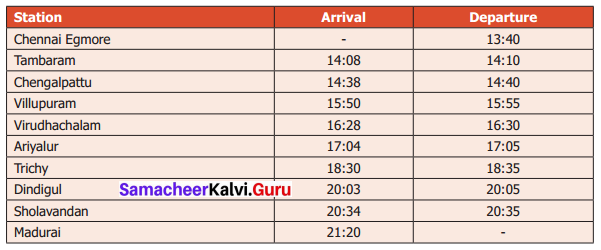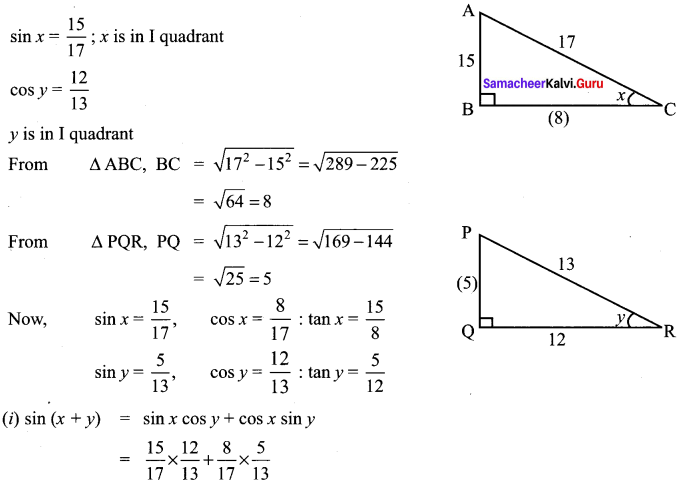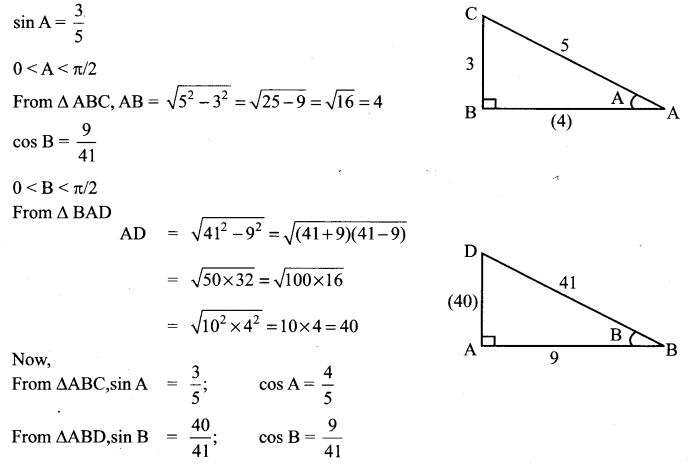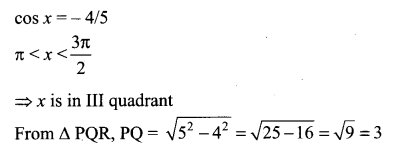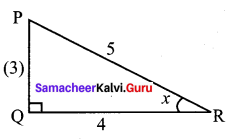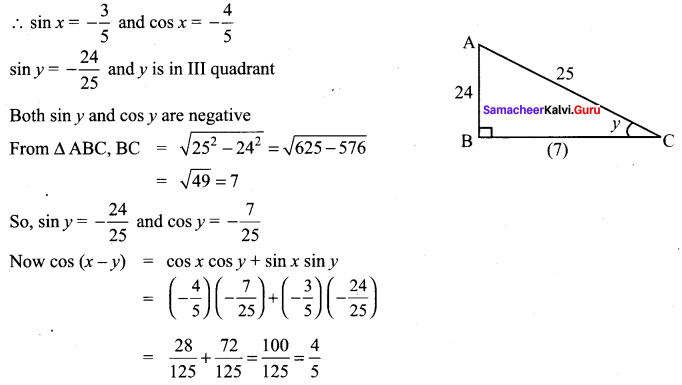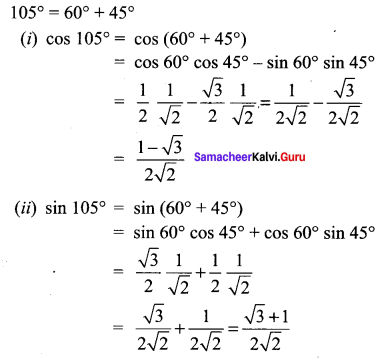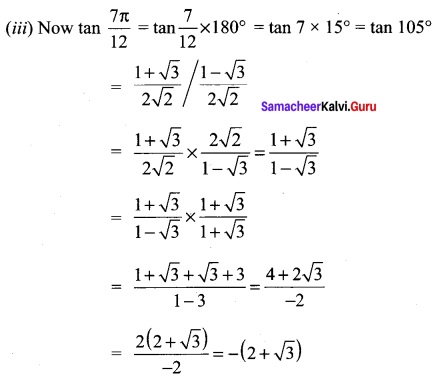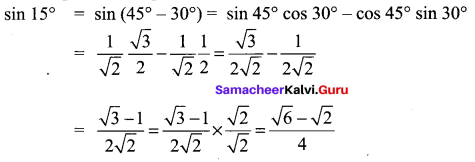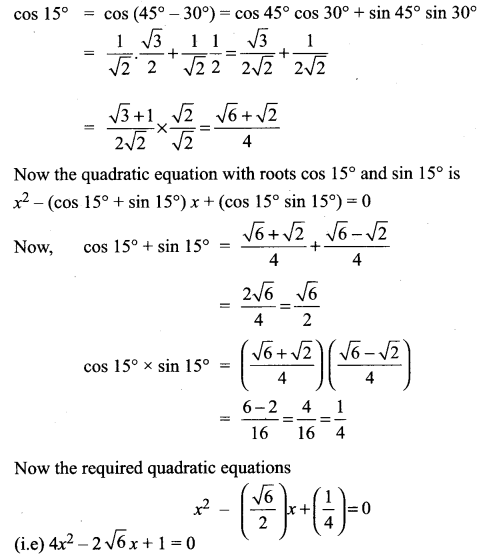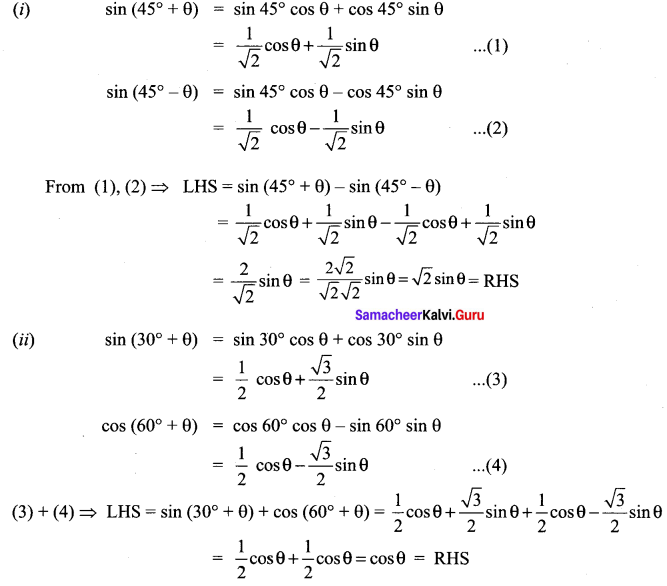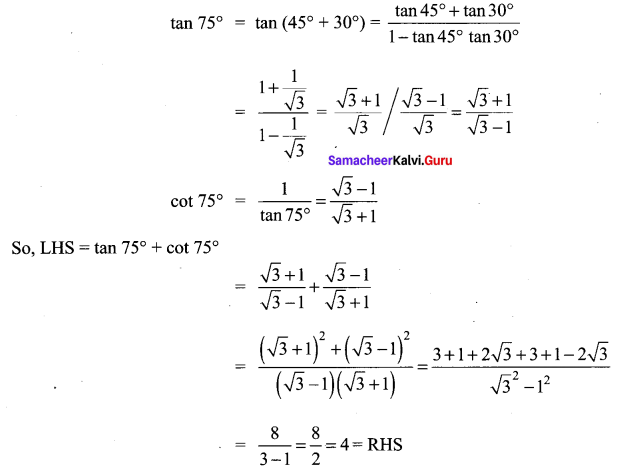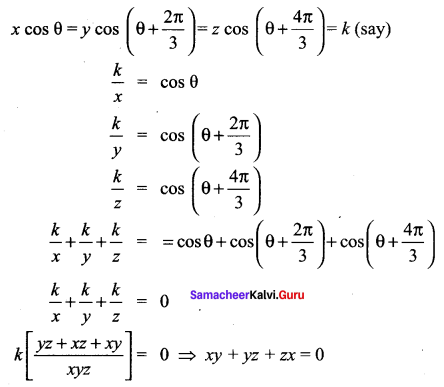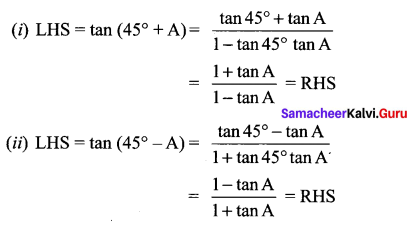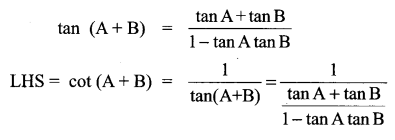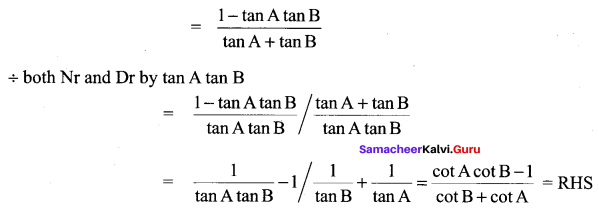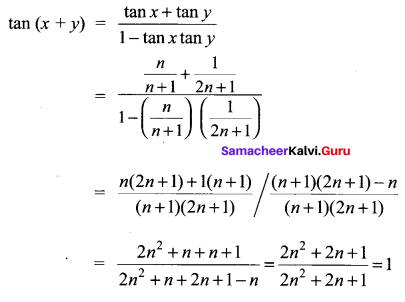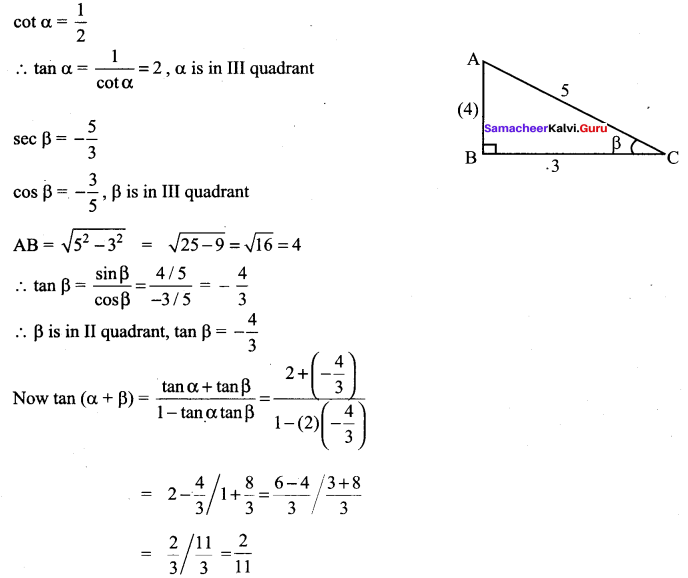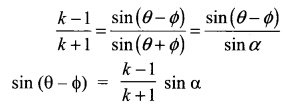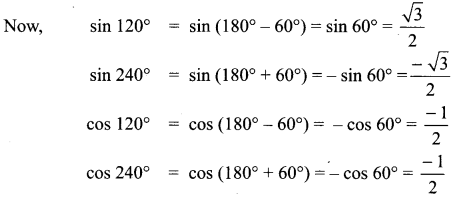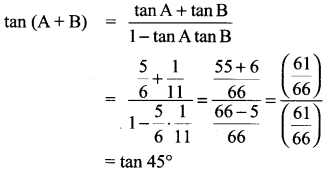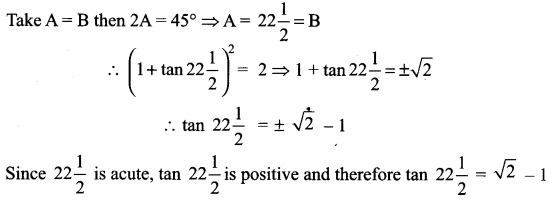Students can Download Tamil Chapter 1.5 குற்றியலுகரம், குற்றியலிகரம் Questions and Answers, Summary, Notes Pdf, Samacheer Kalvi 7th Tamil Book Solutions Guide Pdf helps you to revise the complete Tamilnadu State Board New Syllabus and score more marks in your examinations.
Tamilnadu Samacheer Kalvi 7th Tamil Solutions Term 1 Chapter 1.5 குற்றியலுகரம், குற்றியலிகரம்
மதிப்பீடு
கீழ்க்காணும் சொற்களைக் குற்றியலுகர வகையின் அடிப்படையில் வகைப்படுத்துக.

Answer:
ஆறு, எஃகு, கரும்பு, விறகு, உழக்கு, எட்டு, ஏடு, பந்து, காசு, கொய்து.

பொருந்தாத சொற்களை எடுத்து எழுதுக

Answer:
1. பசு, விடு, ஆறு, கரு – கரு
2. பாக்கு, பஞ்சு, பாட்டு, பத்து – பஞ்சு
3. ஆறு, மாசு , பாகு , அது – அது
4. அரசு, எய்து, மூழ்கு, மார்பு – அரசு
5. பண்பு, மஞ்சு, கண்டு, எஃகு – எஃகு
குறுவினா
Question 1.
‘குற்றியலுகரம்’ என்னும் சொல்லைப் பிரித்து விளக்கம் தருக.
Answer:
குறுமை + இயல் + உகரம் – குற்றியலுகரம். வல்லின எழுத்துக்கள் ஆறின் மீதும் ஏறி (சேர்ந்து வரும் உகரம் தனக்கு உரிய ஒரு மாத்திரை அளவிலிருந்து அரை மாத்திரையாகக் குறைந்து ஒலிக்கும். இதற்குக் குற்றியலுகரம் என்று பெயர். எடுத்துக்காட்டு: காசு, எஃகு, பயறு, பாட்டு, பந்து, சால்பு.
Question 2.
குற்றியலிகரம் என்றால் என்ன?
Answer:
(i) குறுமை + இயல் + இகரம் = குற்றியலிகரம்.
(ii) வரகு + யாது = வரகியாது.
(iii) குற்றியலுகரச் சொற்களின் முன் யாது என்னும் சொல் வருமொழியாக வந்து சேரும் போது, நிலைமொழியீற்று ‘உ’ கரம் இகரமாகத் திரிந்து தன் ஒரு மாத்திரை அளவிலிருந்து குறைந்து அரை மாத்திரை அளவில் ஒலிக்கும். இது ‘குற்றியலிகரம் எனப்படும்.
கற்பவை கற்றபின்
Question 1.
ஒன்று முதல் பத்து வரையுள்ள எண்ணுப் பெயர்களைப் பட்டியலிட்டு எழுதுங்கள்; அவற்றில் குற்றியலுகரச் சொற்களை எடுத்து எழுதுங்கள்.
1. ஒன்று
2. இரண்டு
3. மூன்று
4. நான்கு
5. ஐந்து
6. ஆறு
7. ஏழு
8. எட்டு
9. ஒன்பது
10. பத்து
Answer:
குற்றியலுகரச் சொற்கள் :
1. ஒன்று – மென்தொடர்க் குற்றியலுகரம்
2. இரண்டு – மென்தொடர்க் குற்றியலுகரம்
3. மூன்று – மென்தொடர்க் குற்றியலுகரம்
4. நான்கு – மென்தொடர்க் குற்றியலுகரம்
5. ஐந்து – மென்தொடர்க் குற்றியலுகரம்
6. ஆறு – நெடில்தொடர்க் குற்றியலுகரம்
8. எட்டு – வன்தொடர்க் குற்றியலுகரம்
9. ஒன்ப து – உயிர்த்தொடர்க் குற்றியலுகரம்
10. பத்து – வன்தொடர்க் குற்றியலுகரம்
Question 2.
குற்றியலுகர எண்ணுப் பெயர்களைக் குற்றியலுகர வகையின் அடிப்படையில் வகைப்படுத்துக.
Answer:
ஒன்று, இரண்டு, மூன்று, நான்கு, ஐந்து, ஆறு, ஏழு, எட்டு, ஒன்பது, பத்து
- நெடில் தொடர்க் குற்றியலுகரம் – ஆறு
- உயிர் தொடர்க் குற்றியலுகம் – ஒன்பது
- வன்தொடர்க் குற்றியலுகரம் – எட்டு, பத்து
- மென்தொடர்க் குற்றியலுகரம் – ஒன்று, இரண்டு, மூன்று, நான்கு, ஐந்து
Question 3.
குற்றியலுகர எண்ணுப் பெயர்களின் மாத்திரை அளவைக் கண்டுபிடியுங்கள்.
Answer:
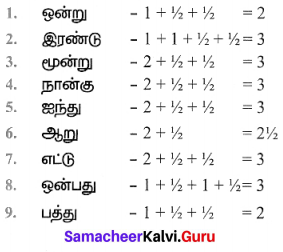
Question 4.
கு, சு, டு, து, று ஆகிய குற்றியலுகரத்திதை இறுதியாகக் கொண்ட ஈரெழுத்துச் சொற்களைத் திரட்டுக.
Answer:

கூடுதல் வினாக்கள்
சரியான விடையைத் தேர்ந்தெடுத்து எழுதுக:
Question 1.
குறில் எழுத்துகளைக் குறிக்க …………. என்ற அசைச் சொல்லைப் பயன்படுத்துகிறோம்.
அ) கரம்
ஆ) கான்
இ) கேனம்
ஈ) கோடை
Answer:
அ) கரம்
Question 2.
நெடில் எழுத்துகளைக் குறிக்க ……….. என்ற அசைச் சொல்லைப் பயன்படுத்துகிறோம்.
அ) கேனம்
ஆ) கரம்
இ) கான்
ஈ) கோடை
Answer:
இ) கான்
Question 3.
குற்றியலுகரம் தனக்கு முன் உள்ள எழுத்தைக் கொண்டு ………….. வகையாகப் பிரிக்கப்படும்.
அ) 3
ஆ) 5
இ) 6
ஈ) 1
விடை :
இ) 6
Question 4.
தனி நெடிலைத் தொடர்ந்து வரும் குற்றியலுகரம் …………..
அ) நெடில் தொடர்க் குற்றியலுகரம்
ஆ) உயிர்த்தொடர்க் குற்றியலுகரம்
இ) இடைத்தொடர் குற்றியலுகரம்
ஈ) மென்தொடர்க் குற்றியலுகரம்
Answer:
அ) நெடில் தொடர்க் குற்றியலுகரம்
Question 5.
ஈரெழுத்துச் சொற்களாக மட்டும் அமையும் குற்றியலுகரம் எது?
அ) மென்தொடர்க் குற்றியலுகரம்
ஆ) நெடில் தொடர்க் குற்றியலுகரம்
இ) இடைத்தொடர் குற்றியலுகரம்
ஈ) உயிர்தொடர்க் குற்றியலுகரம்
Answer:
ஆ) நெடில் தொடர்க் குற்றியலுகரம்
Question 6.
தனிநெடில் அல்லாத உயிர்மெய் எழுத்தைத் தொடர்ந்து வரும் குற்றியலுகரம் …………….
அ) உயிர்த்தொடர்க் குற்றியலுகரம்
ஆ) வன்தொடர்க் குற்றியலுகரம்
இ) நெடில்தொடர்க் குற்றியலுகரம்
ஈ) இடைத்தொடர் குற்றியலுகரம்
Answer:
அ) உயிர்த்தொடர்க் குற்றியலுகரம்
Question 7.
தன் ஒரு மாத்திரை அளவில் இருந்து குறுகி ஒலிக்கும் இகரம் ………….. எனப்படும்.
அ) குற்றியலுகரம்
ஆ) குற்றியலிகரம்
இ) முற்றியலுகரம்
ஈ) ஐகாரக்குறுக்கம்
Answer:
ஆ) குற்றியலிகரம்
Question 8.
குற்றியலிகரம் …………… இடங்க ளில் மட்டும் வரும்.
அ) இரண்டு
ஆ) மூன்று
இ) ஐந்து
ஈ) ஆறு
Answer:
அ) இரண்டு
Question 9.
மியா’ என்பது ஓர் அசைச்சொல். இச்சொல்லில் வரும் மி’யில் உள்ள இகரம் …..
அ) குற்றியலிகரம்
ஆ) குற்றியலுகரம்
இ) முற்றியலுகரம்
ஈ) மகரக்குறுக்கம்
Answer:
அ) குற்றியலிகரம்
நிரப்புக :
Question 1.
சால்பு – இது ………….. ஆகும்.
Answer:
இடைத்தொடர்க் குற்றியலுகரம்
Question 2.
கயிறு – இது …………… ஆகும்.
Answer:
உயிர்த்தொடர்க் குற்றியலுகரம்
Question 3.
……… என்னும் எழுத்தைத் தொடர்ந்து வரும் குற்றியலுகரச் சொற்கள் இல்லை .
Answer:
வ்
பொருத்துக :
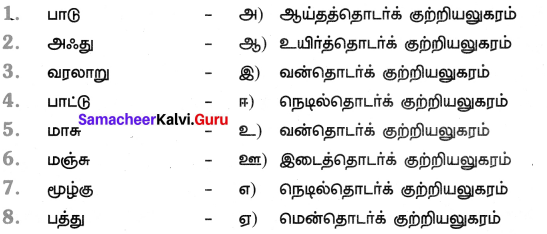
Answer:
1 – ஈ),
2 – அ),
3 – ஆ),
4 – இ),
5 – எ),
6 – ஏ),
7 – ஊ),
8 – உ)
விடையளி :
Question 1.
‘மூதல் எழுத்து என்றால் என்ன?
Answer:
உயிர் எழுத்துகள் பன்னிரண்டும் , மெய் எழுத்துகள் பதினெட்டும் ஆக முப்பது எழுத்துகளும் முதல் எழுத்துகள் எனப்படும்.
Question 2.
சார்பெழுத்து எத்தனை வகைப்படும்? அவை யாவை?
Answer:
சார்பெழுத்து பத்து வகைப்படும்.
அவை உயிர்மெய், ஆய்தம், உயிரளபெடை, ஒற்றளபெடை, குற்றியலுகரம், குற்றியலிகரம், ஐகாரக்குறுக்கம், ஒளகாரக்குறுக்கம், மகரக்குறுக்கம், ஆய்தக்குறுக்கம் என்பனவாகும்.
Question 3.
முற்றியலுகரம் என்றால் என்ன?
Answer:
- தனிக்குறில் எழுத்தை அடுத்து வரும் வல்லின உகரங்கள் ஒரு மாத்திரை அளவுக்கு முழுமையாக ஒலிக்கும்.
- வல்லினம் அல்லாத உகரங்கள் எப்போதும் முழுமையாகவே ஒலிக்கும்.
- இவ்வாறு ஓசை குறையாமல் ஒரு மாத்திரை அளவில் முழுமையாக ஒலிப்பதை முற்றியலுகரம் என்பர்.
எடுத்துக்காட்டு: புகு , பசு , விடு, அது, வறு
Question 4.
குற்றியலுகரத்தின் வகைகளைப் பற்றி கூறுக.
Answer:
குற்றியலுகரம் ஆறு வகைப்படும். அவை,
- நெடில் தொடர்க் குற்றியலுகரம்
- ஆய்தத்தொடர்க் குற்றியலுகரம்
- உயிர்த்தொடர்க் குற்றியலுகரம்
- வன்தொடர்க் குற்றியலுகரம்
- மென்தொடர்க் குற்றியலுகரம்
- இடைத்தொடர்க் குற்றியலுகரம்
Question 5.
நெடில்தொடர்க் குற்றியலுகரம் சான்றுடன் விளக்குக.
Answer:
- தனி நெடிலைத் தொடர்ந்து வரும் குற்றியலுகரம் ‘நெடில்தொடர்க் குற்றியலுகரம் எனப்படும்.
- இவை ஈரெழுத்துச் சொற்களாக மட்டும் அமையும்.
எடுத்துக்காட்டு: பாகு, மாசு, பாடு, காது
Question 6.
ஆய்தத்தொடர்க் குற்றியலுகரம் சான்றுடன் விளக்குக.
Answer:
ஆய்தத் எழுத்தைத் தொடர்ந்து வரும் குற்றியலுகரம் ஆய்தத் தொடர்க் குற்றியலுகரம் எனப்படும்.
எடுத்துக்காட்டு: எஃகு, அஃது.
Question 7.
உயிர்த்தொடர்க் குற்றியலுகரம் சான்றுடன் விளக்குக.
Answer:
தனிநெடில் அல்லாத உயிர்மெய் எழுத்தைத் தொடர்ந்து வரும் குற்றியலுகரம் உயிர்த்தொடர்க் குற்றியலுகரம் எனப்படும்.
எடுத்துக்காட்டு:
அரசு (ர – ர் + அ), கயிறு (J – ய்+இ, ஒன்பது (ப – ப்+அ), வரலாறு (லா – ல் + ஆ)
Question 8.
வன்தொடர்க் குற்றியலுகரம் சான்றுடன் விளக்குக.
Answer:
வல்லின க், ச், ட், த், ப், ற் மெய் எழுத்துகளைத் தொடர்ந்து வரும் குற்றியலுகரம் வன் தொடர்க் குற்றியலுகரம் எனப்படும்.
எடுத்துக்காட்டு: பாக்கு, பேச்சு, பாட்டு, பத்து, உப்பு, பற்று
Question 9.
மென்தொடர்க் குற்றியலுகரம் சான்றுடன் விளக்குக.
Answer:
மெல்லின (ங், ஞ், ண், ந், ம், ன்) மெய் எழுத்துகளைத் தொடர்ந்து வரும் குற்றியலுகரம் மென்தொடர்க் குற்றியலுகரம் எனப்படும்.
எடுத்துக்காட்டு: பங்கு, மஞ்சு, பண்பு, பந்து, அம்பு, கன்று.
Question 10.
இடைத்தொடர்க் குற்றியலுகரம் சான்றுடன் விளக்குக.
Answer:
இடையின ய், ர், ல், வ், ழ், ன்) மெய் எழுத்துகளைத் தொடர்ந்து வரும் குற்றியலுகரம் இடைத்தொடர்க் குற்றியலுகரம் எனப்படும்.
எடுத்துக்காட்டு: எய்து, மார்பு, சால்பு, மூழ்கு.
Question 11.
தனிக்குறில் எழுத்தை அடுத்து வரும் வல்லின உகரங்கள் ஒரு மாத்திரை அளவுக்கு முழுமையாக ஒலிக்குமா?
Answer:
தனிக்குறில் எழுத்தை அடுத்து வரும் வல்லின உகரங்கள் ஒரு மாத்திரை அளவுக்கு முழுமையாக ஒலிக்கும்.
Question 12.
ஓசை குறையாமல் ஒரு மாத்திரை அளவில் முழுமையாக ஒலிப்பது எது?
Answer:
ஓசை குறையாமல் ஒரு மாத்திரை அளவில் முழுமையாக ஒலிப்பது முற்றியலுகரம். எடுத்துக்காட்டு : புகு , பசு , விடு, அது, வறு.
மொழியை ஆள்வோம்
கேட்க :
Question 1.
தமிழின் சிறப்பைப் பற்றிய அறிஞர்களின் சொற்பொழிவுகளைக் கேட்டு மகிழ்க. உயர்திரு. ச.பாலன் அவர்களின் சொற்பொழிவு:
Answer:
- மிக மிக உயர்ந்த மொழி தமிழ்மொழி.
- பேரறிஞர்கள் பலர் தங்கள் நூல்கள் வாயிலாக தமிழ்மொழியின் சிறப்பை விரிவாக எடுத்துரைத்துள்ளனர்.
- ”யாமறிந்த மொழிகளிலே தமிழ்மொழி போல் இனிதாவது எங்கும் காணோம்” என்றார் மகாகவி பாரதியார்.
- ‘கம்பனை போல் வள்ளுவரைப் போல் இளங்கோவைப் போல் பூமிதனில் யாங்ஙனுமே பிறந்தது இல்லை என்றார் பாரதியார்.
- பெருமை மிக்க நூல்களும் அறிஞர்களும் சிறப்பித்து பாடிய தமிழ் உலக அளவிலே மிகச் சிறந்த ஒரு மொழியாகப் போற்றப்படுகின்றது.
- செம்மொழி என்றால் பிறமொழிகளின் தாக்கம் இல்லாமலும் சில மொழிகளுக்கு தாயாகவும் இலக்கண இலக்கிய வளமுடையதாகவும் இருக்க வேண்டும்.
- கன்னடம், மலையாளம், தெலுங்கு ஆகியவற்றிற்கு தாய்மொழியாக இருக்கிறது நம் தமிழ்மொழி.
- தமிழின் பெருமையை விளக்கும் வண்ணம் அறிஞர்கள் பலர் நூல்களை எழுதி வெளியிட்டுள்ளார்கள்.
கவிக்கோ அப்துல்ரகுமானின் உரை :
- தமிழ்மொழி பேசுவதற்கு அதிகம் மூச்சு விடவேண்டியது இல்லை
- தமிழ் உலகத்திலேயே உயர்ந்தமொழி.
- ஆதி மொழி தொன்மை மொழி தமிழ் மொழியாகும்.
- இரண்டு நாடுகளின் அரசாங்கமொழி ஸ்ரீலங்கா, சிங்கப்பூர்.
- மலேசியாவில் ஒரே கல்விமொழி.
- செம்மொழிகளில் முழுமையான இலக்கண வடிவம் கொண்டது தமிழ்மொழி தொல்காப்பியம்.
கீழ்க்காணும் தலைப்புகளில் இரண்டு நிமிடம் பேசுக
Question 1.
நான் அறிந்த பழமொழிகள் வணக்கம் :
அன்னைத் தமிழில் வணங்குகிறேன்! நான் அறிந்த பழமொழிகளைப் பற்றி இங்கு பேச வந்துள்ளேன்.
1. முயற்சி திருவினையாக்கும் :
பழமொழி விளக்கம் : முயற்சியைக் கைவிடாமல் தொடர்ந்து எந்தவொரு செயலையும் செய்து வந்தால் வாழ்வில் உயர்வு அடையலாம் என்பதே இப்பழமொழியின் விளக்கம். ‘சித்திரமும் கைப்பழக்கம், செந்தமிழும் நாப்பழக்கம்’ என்பதை உணர்ந்து தொடர்ந்து முயற்சி செய்தால் வாழ்வில் வெற்றி பெறலாம் என்பதே இப்பழமொழி உணர்த்தும் நீதி.
2. இளமையில் கல் :
பழமொழி விளக்கம் :
மனித வாழ்வில் கல்வி இன்றியமையாதது. ஆனால் கற்க வேண்டிய இளம் வயதில் கல்வி கற்க வேண்டும். இளமையில் மட்டுமே கல்வியை கற்க முடியும், கற்க வேண்டும் என்பது இப்பழமொழியின் நீதியாகும்.
3. காற்றுள்ளபோதே தூற்றிக்கொள் :
பழமொழி விளக்கம் :
வாழ்க்கையில் வெற்றி பெற நினைப்பவர்கள் அதற்கான சந்தர்ப்பம் கிடைக்கும்போது அந்த சந்தர்ப்பதை தவறவிடாமல் பயன்படுத்தி வெற்றி பெற வேண்டும்.
4. உப்பிட்டவரை உள்ளளவும் நினை :
பழமொழி விளக்கம் : நாம் பசியால் வாடிய பொழுது நமக்கு உணவளித்தவரை என்றுமே மறக்கக்கூடாது. நம்முடைய உள்ளத்தில் என்றுமே அவர்களை நினைக்க வேண்டும்.
5. கற்றது கைம்மண் அளவு கல்லாதது உலகளவு :
பழமொழி விளக்கம் :
எனக்கு எல்லாம் தெரியும் என்று செருக்கு கொள்ளக்கூடாது. ஏனெனில் நாம் கற்றுக் கொண்டது நமது கையினைப் போன்ற சிறிய அளவே. கல்லாதது உலகளவு உள்ளது என்பதே இப்பழமொழியின் விளக்கம். எல்லாம் தெரியும் என்ற செருக்கு ஒருவனுக்கு இருக்கக்கூடாது என்பதை உணர்த்துவதே இப்பழமொழியின் நீதியாகும்.
சொற்களை எடுத்து எழுதுக
Question 1.
கொடுக்கப்பட்டுள்ள வினாக்களுக்கு ஏற்பத் தொடரில் அழுத்தம் தர வேண்டிய சொற்களை எடுத்து எழுதுக.

Answer:

அறிந்து பயன்படுத்துவோம்
திணை இரண்டு வகைப்படும். அவை, 1. உயர்திணை, 2. அஃறிணை ஆறு அறிவுடைய மனிதர்களை உயர்திணை என்பர். பறவைகள், விலங்கினங்கள், தாவரங்கள் மற்றும் உயிரற்ற பொருள்களை அஃறிணை என்பர்.
படத்திற்கு பொருத்தமான திணையை எழுதுக
Answer:
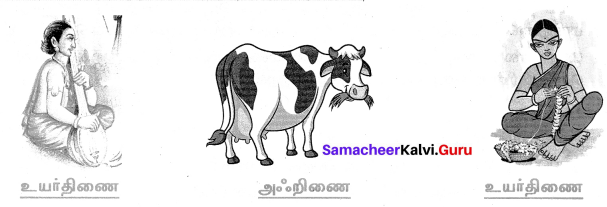
கீழ்க்காணும் சொற்களை உயர்திணை, அஃறிணை என வகைப்படுத்துக
வயல், முகிலன், குதிரை, கயல்விழி, தலைவி, கடல், ஆசிரியர், புத்தகம், சுரதா, மரம்

Answer:

கொடுக்கப்பட்டுள்ள குறிப்புகளைக் கொண்டு கட்டுரை எழுதுக
தாய்மொழிப் பற்று
முன்னுரை – மொழி பற்றிய விளக்கம் – தாய்மொழி – தாய்மொழிப் பற்று – தாய்மொழிப் பற்றுக் கொண்ட சான்றோர் – சாதுவன் வரலாறு – நமது கடமை – முடிவுரை)
முன்னுரை:
அன்னைத் தமிழ் ! இன்பத் தமிழ் ! இனிய தமிழ் ! பைந்தமிழ்! செந்தமிழ்! என பலவாறு போற்றிப் பேசும் நம் தாய் மொழியாம் தமிழ் மொழி பற்றி இக்கட்டுரையில் ஆய்வதே நம் சீரிய நோக்கமாகும்.
மொழிபற்றிய விளக்கம்:
மனிதன் தன் எண்ணங்களை மனித உணர்ச்சிகளை பிறருக்கு வெளிப்படுத்துவதற்காக அவனால் உருவாக்கப்பட்டதே மொழியாகும். வாயினால் பேசப்பட்டுப் பிறரால் கேட்டு உணரப்படுவது பேச்சு மொழியாகும். கண்ணால் கண்டு உணருமாறு வரிவடிவமாக எழுதப்பட்டு படிக்கப்படுவது எழுத்துமொழியாகும்.
தாய்மொழி:
அவரவர் தாய்மொழியே அவரவர்க்கு உயர்வாகும். தமிழ்மொழியைத்தாய்மொழியாகக் கொண்ட ஒவ்வொருவரும் தமிழின் பெருமையை, அதன் தொன்மையை கட்டாயமாக அறிந்திருக்க வேண்டும். தாய்மொழி மூலம் கல்வி கற்றால் உணர்ச்சியும் உணர்வும் ஒரு சேர மனித இனத்தினை உயர்ந்த நிலைக்கு இட்டுச் செல்லும் என்பதில் சிறிதும் ஐயமில்லை .
தாய்மொழிப் பற்று:
தன்னிகரில்லாத தமிழ் என்றும் ‘இருந்தமிழே உன்னால் இருந்தேன் இமையோர் விருந்தமிழ்தம் என்றாலும் வேண்டேன்” – (தமிழ்விடு தூது) ‘தமிழுக்கும் அமுதென்று பேர்’ என்றும் பாரதிதாசன் பைந்தமிழ் இனிமையை போற்றிப் பாடுகிறார். எண்ணற்ற வேர்ச் சொற்களால் புதிய புதிய சொற்களை ஆக்கிக் கொள்ளும் திறன் படைத்தது, தமிழ். தமிழின் எழுத்து வகைப்பாடும் வரிசை முறையும் மொழியியலாளரையும் வியக்க வைப்பன.
தாய்மொழிப் பற்றுக் கொண்ட சான்றோர்:
- சூரிய நாராயண சாஸ்திரி என்ற தன்னுடைய பெயரை பரிதிமாற் கலைஞர் என மாற்றிக் கொண்டவர். தாய்மொழி மீது மிகுந்த பற்றும் அக்கறையும் கொண்டவர்.
- வேதாச்சலம் என்ற தம் பெயரை மறைமலையடிகள் என மாற்றிக் கொண்டவர். செந்தமிழில் கட்டுரைகள் எழுதி புகழ் பெற்றவர்.
நமது கடமை:
- தாய்மொழியில் கல்வி கற்க வேண்டும்.
- தாய்மொழியில் சொற்களஞ்சியம் பெருக வேண்டும்.
- தாய்மொழியில் சாதனைகள் பல படைக்க வேண்டும்.
முடிவுரை:
ஒண்டமிழ், வான் தமிழ், தேன் தமிழ், பைந்தமிழ் என்ற பலவாறு போற்றிப் புகழ்பாடும் தாய் மொழியாம் தமிழில் எண்ணற்ற கருத்துக் குவியல்கள் பொதிந்துள்ளன. அனைத்தையும் நாம் வாழ்நாளில் பயன்படுத்தி இன்புற வேண்டும்.
மொழியோடு விளையாடு
தொகைச் சொற்களை விரித்து எழுதுக.
(எ.கா.) இருதிணை – உயர்திணை, அஃறிணை
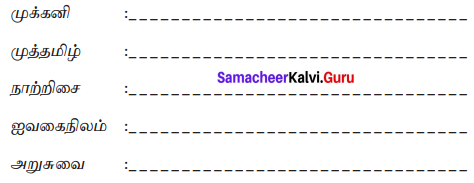
Answer:
- முக்கனி : மா, பலா, வாழை
- முத்தமிழ் : இயல், இசை, நாடகம்
- நாற்றிசை : கிழக்கு, மேற்கு, வடக்கு, தெற்கு
- ஐவகை நிலம்: குறிஞ்சி, முல்லை , மருதம், நெய்தல், பாலை
- அறுசுவை : இனிப்பு, புளிப்பு, கார்ப்பு, துவர்ப்பு, கசப்பு, உவர்ப்பு
ஒரே சொல் வருமாறு கட்டங்களில் எழுதுக
கட்டங்களிலுள்ள எழுத்துகளை மாற்றி, மேலிலிருந்து கீழாகவும் இடமிருந்து வலமாகவும் எழுதினால் ஒரே சொல் வருமாறு கட்டங்களில் எழுதுக.
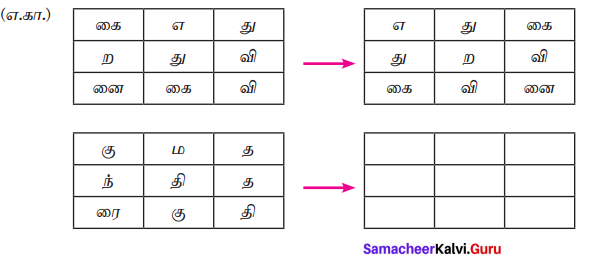
Answer:

இரு பொருள் கொண்ட ஒரு சொல்லால் நிரப்புக
(எ.கா.) அரசுக்குத் தவறாமல் வரி செலுத்த வேண்டும்.
ஏட்டில் எழுதுவது வரி வடிவம்.
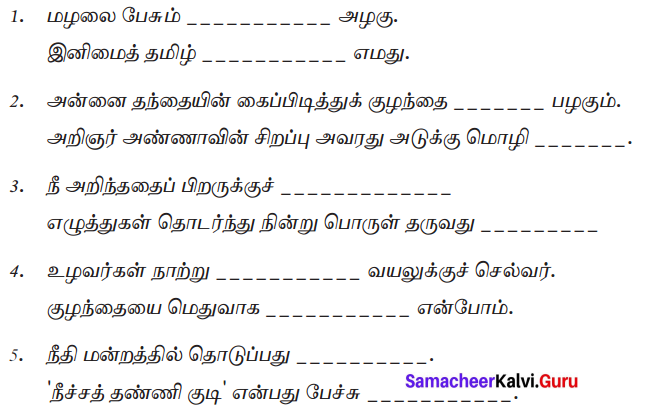
Answer:
1. மழலை பேசும் மொழி அழகு.
இனிமைத் தமிழ் மொழி எமது
2. அன்னை தந்தையின் கைப் பிடித்துக் குழந்தை நடை பழகும்.
விராக சீனா நம அறிஞர் அண்ணாவின் சிறப்பு அவரது அடுக்குமொழி நடை.
3. நீ அறிந்ததைப் பிறருக்குச் சொல்.
எழுத்துகள் தொடர்ந்து நின்று பொருள் தருவது சொல்.
4. உழவர்கள் நாற்று நட வயலுக்குச் செல்வர்.
குழந்தையை மெதுவாக நட என்போம்.
5. நீதிமன்றத்தில் தொடுப்பது வழக்கு.
நீச்சத் தண்ணி குடி என்பது பேச்சு வழக்கு.
நிற்க அதற்குத் தக
என் பொறுப்புகள்
1. கடிதங்கள், கட்டுரைகள் போன்றவற்றை எழுதும் போது திருத்தமான நடையையே கையாள்வேன்.
2. பொம்மலாட்டம், தெருக்கூத்து போன்ற நாட்டுப்புறக் கலைகளைப் போற்றுவேன்.
கலைச்சொல் அறிவோம்


